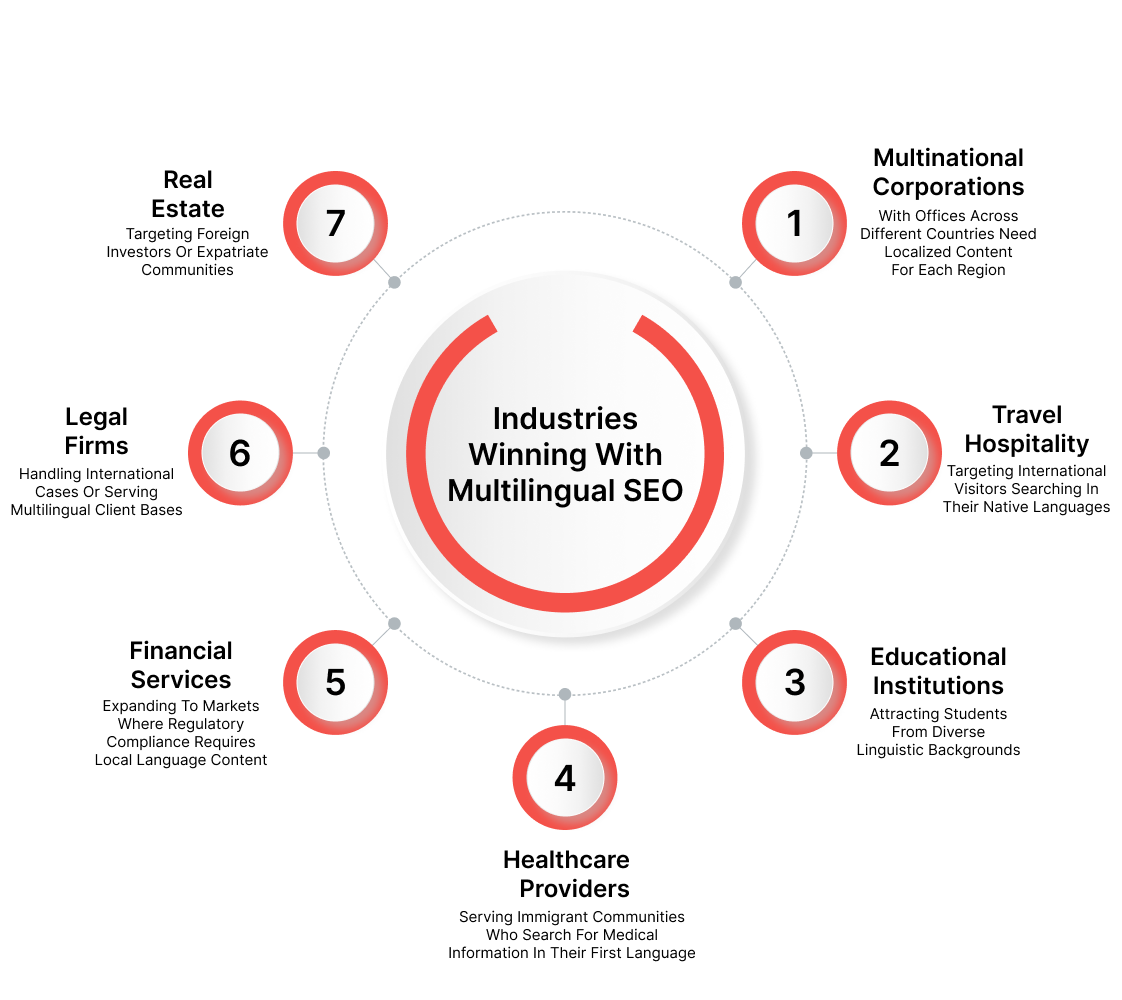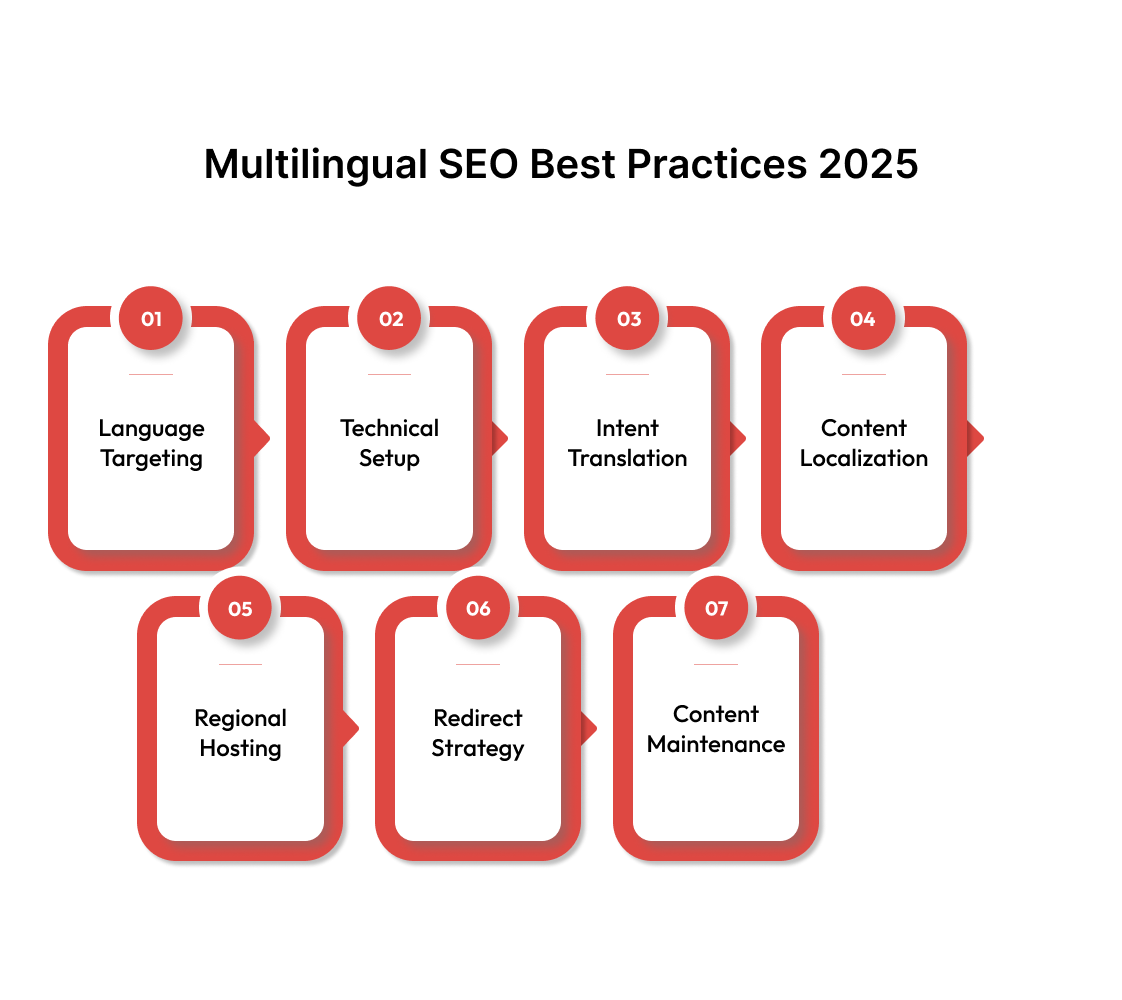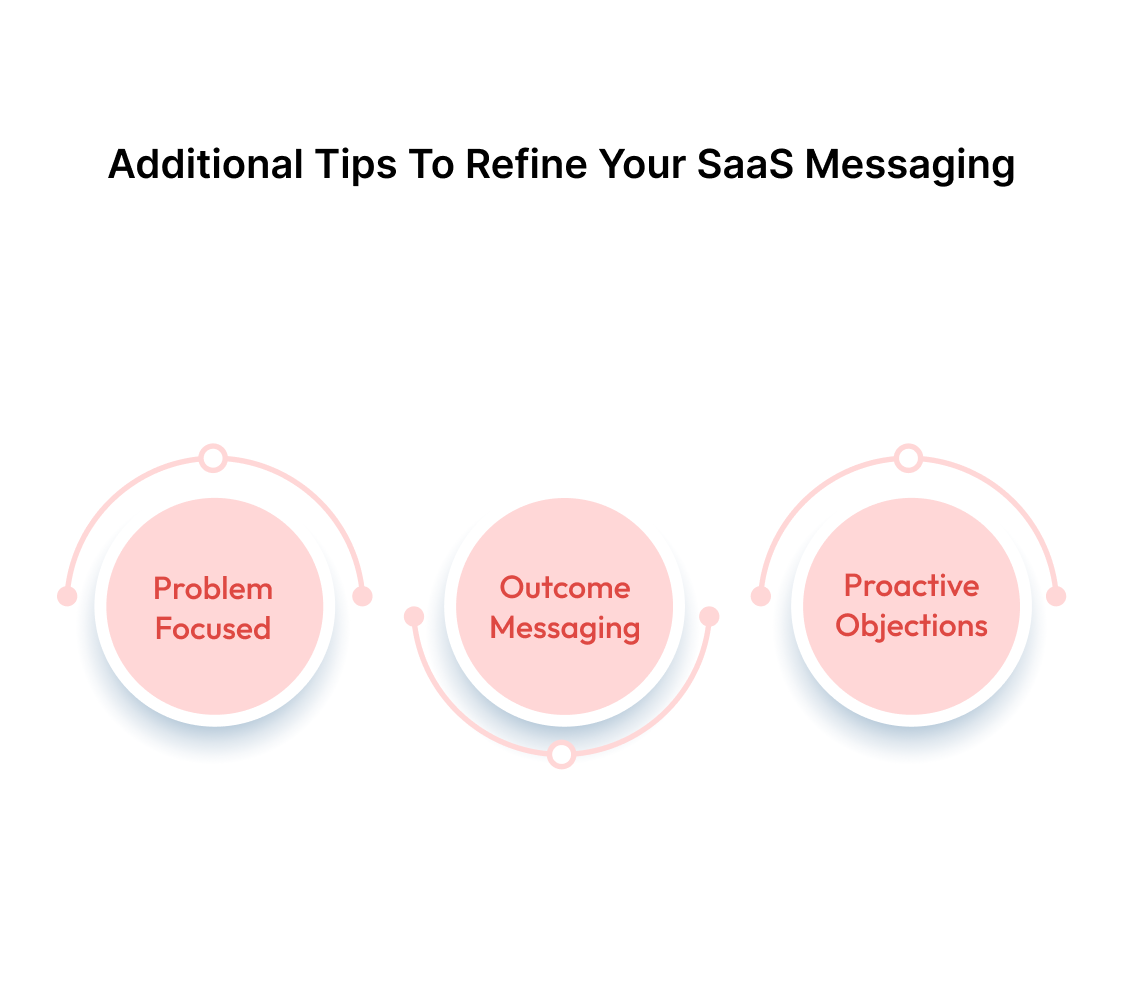SEO feels like running on a hamster wheel that never stops spinning. A few years ago, SEOs got slapped with mobile-first indexing and Core Web Vitals updates.
Today, it's a barrage of AI overviews, AI mode, and zero-click searches that have slashed click-through rates and website traffic across the board.
But why are businesses still doubling down on search optimization? Simple. Google.com is still holding the rank of the most visited website globally, pulling in 105.41 billion monthly visits.
Brace yourself for the real twist.
In 2023, roughly 13 million people used generative AI for their searches.
In short, more people are searching online worldwide in their native languages because they finally can. They don't have to rely on broken English translations or sift through irrelevant results anymore.
That's an opportunity waiting to be seized. This is a no-nonsense, deeply researched guide to multilingual SEO best practices. Even though we exclusively work on B2B SaaS website conversion optimization, the SEO strategies we're sharing work across all industries.
TL;DR:
- Language distribution reveals untapped opportunities: While English dominates at 49.2% of websites, the remaining 50.8% represents massive markets speaking Spanish (6.0%), German (5.8%), Japanese (5.1%), and French (4.5%). Source
- Technical architecture is of critical importance: Proper URL structure, hreflang implementation, and language declarations must be configured before content creation to avoid competing against yourself.
- Translation differs fundamentally from localization: Direct translation misses cultural nuances and regional search behaviors that affect keyword selection and user engagement patterns.
- Regional search engines require different optimization strategies: Google dominates globally, but Baidu (China), Yandex (Russia), and Naver (South Korea) have unique ranking factors and algorithm preferences.
- Dynamic websites outperform static ones for multilingual SEO: Real-time language detection, automatic hreflang generation, and personalized content delivery create better user experiences and search performance.
What Makes Multilingual SEO the Need of the Hour?
English may be the dominant content language online, but it doesn’t even account for half of the web. According to W3Techs, only about 49% of websites use English.
That means over 50% of the internet is being served in other languages like Spanish, German, Japanese, French, Portuguese, and Russian. And while English-speaking audiences still convert well, the assumption that everyone searches in English is outdated.
Multilingual SEO is no longer a nice extra. It’s very much the new standard for any business eyeing global traction. Search engines now factor in not just language but also geolocation, device settings, and search history to decide what content to show.
If your content isn’t built with these markers in mind, you're basically invisible in regions that could be your strongest markets.
Global search behaviour has also changed. AI tools, voice search, and localized search assistants are making it easier for users to query in their native language. People aren’t switching to English just to browse. They expect businesses to meet them halfway.
There are also scenarios where multilingual and multi-region SEO becomes non-negotiable:
- You're targeting countries with strict language laws: Places like Canada, Belgium, and Switzerland have language compliance rules. If your site doesn’t meet them, you risk both rankings and legal issues.
- You run paid search campaigns globally: Without localized landing pages, ad quality scores drop, cost-per-click rises, and bounce rates spike. A multilingual site fixes that.
- You're entering regions with low English proficiency: Countries like Japan, Brazil, or Russia prefer local-language content. Even if users speak basic English, they rarely buy from English-only sites.
- Your analytics indicate high traffic from non-English regions: If you’re seeing traffic from Germany or Mexico but conversions are low, the problem likely isn’t with your offer; it’s with your language handling.
- Your product needs trust to convert: Legal, financial, health, or education products don’t convert well unless users fully understand what they’re signing up for. Native-language content builds that confidence.
- You're competing with local players: If local businesses are optimising in their native language and you’re not, search engines will favour them, no matter how good your English content is.
Search intent is becoming more regional by the day. And with over 90 million users projected to use generative AI for search by 2027, language‑agnostic SEO is a lost opportunity. You can’t afford to show up as the foreign brand with clunky translations or no regional presence at all.
Several industries are already seeing massive returns from multilingual SEO investments:

- Multinational corporations with offices across different countries need localized content for each region
- Tourism and hospitality businesses targeting international visitors searching in their native languages
- Educational institutions attracting students from diverse linguistic backgrounds
- Healthcare providers serving immigrant communities who search for medical information in their first language
- Financial services expanding to markets where regulatory compliance requires local language content
- Legal firms handling international cases or serving multilingual client bases
- Real estate companies targeting foreign investors or expatriate communities
If you're planning to scale beyond your primary market, language is just the beginning. A well-translated site won’t take you far if search engines can’t index it correctly, or if it doesn’t reflect how people in that region actually search.
This is where most businesses get stuck. They localize the words but not the experience.
Translation is execution. Multilingual SEO is a strategy. That’s the part we’ll get into next.
Multilingual Website SEO Best Practices for 2025’s Complex SEO Landscape

We've been optimizing multilingual sites for the past six years. These strategies come from real campaigns across 23 countries and 15 languages. Some worked immediately. Others required months of testing and refinement. All have been validated with measurable results.
1. Start With Realistic Language Targeting
You don’t need to go multilingual in 15 languages at once. That’s not sustainable for most teams. Start with where demand and opportunity already exist.
Pull data from:
- Google Analytics → check where the current traffic is coming from
- Google Search Console → sort by countries/languages with impressions but low CTR
- CRM or sales records → spot inbound leads from non-English regions
Now align that with market potential. For example, if 8% of traffic comes from France but the bounce rate is high, you might be missing localized intent or trust.
Picking languages based on current and potential demand lets you prioritize ROI, instead of just guessing.
2. Technical Foundation Setup

Getting the technical architecture right can prevent a lot of headaches down the line. Search engines need clear signals about which language serves which audience.
Without a proper technical setup, your content competes against itself instead of ranking for relevant searches.
A. Language Declaration Methods
Your site needs to tell search engines which language each page uses. HTML lang attributes go in the opening HTML tag and should match the actual content language. Search engines use this signal to serve appropriate results to users searching in specific languages.
B. Use Separate URLs for Each Language
Structure your site for clarity. The three main options:
Subdirectories work best when you want one domain to rank globally. ccTLDs make sense only if you’re building a truly local presence.
Search engines treat each setup differently. Without the right structure, your local pages may never show up in regional SERPs.
C. Hreflang Implementation
Hreflang tags tell search engines which language version to show users based on their location and browser settings. These tags prevent duplicate content issues and ensure users see content in their preferred language. Place hreflang tags in the HTML head section or XML sitemap.
Some essentials:
- Match each version of the page to its exact alternate
- Use x-default for the fallback version (usually English)
- Always include canonical tags alongside hreflang
Here’s a basic example:
<link rel="alternate" hreflang="en-us" href="https://example.com/us/" />
<link rel="alternate" hreflang="fr-fr" href="https://example.com/fr/" />
<link rel="alternate" hreflang="x-default" href="https://example.com/" />
3. Translate for Search Intent, Not Just Grammar
It’s easy to assume that once content is translated accurately, it’s ready to rank. But what people search for, and how they phrase it, rarely lines up word-for-word across languages. That’s where most multilingual SEO strategies fall flat - they rely on correct grammar instead of search behavior.
Take this simple example. The English keyword “cloud storage” might translate as stockage en ligne in French. It’s grammatically correct and widely understood.
But if French users are actually searching for espace cloud gratuit when looking for free storage solutions, your content won’t show up, even if the translation is perfect.
This isn’t just about vocabulary. You have to understand intent in the context of local culture, habits, and market familiarity with your product or service. Some regions prefer brand-oriented queries.
Others use generic, utility-driven terms. The wrong match means poor rankings, low CTRs, and wasted effort.
Here’s what to do instead:
- Use native keyword research tools, configured for the right region and language. Google Keyword Planner lets you filter by country and language. Ahrefs and SEMrush have region-specific databases too. Don’t rely on English keywords run through Google Translate. They often miss the mark.
- Check the actual SERPs by simulating a local environment. Use a VPN or proxy to view search results as a local user. What appears on the first page in Mexico or Germany might be very different from what ranks in the U.S., even for the same topic.
- Study local competitors in that language. Look at their headlines, URLs, meta descriptions, and internal linking. These tell you what’s already working in your target market.
- Avoid literal translations for head terms. Long-tail queries often hold more value, especially in B2B. The way people describe problems or needs changes based on how those needs are framed locally.
You’re not writing to impress a grammar checker. You’re writing to rank and convert. And that only happens when your content aligns with how local users think and search, not just how your product team talks about it.
4. Content Strategy and Localization

Translation software misses cultural nuances that affect search behavior. People in different regions use different terms for identical concepts. Your content strategy must account for these variations to capture local search traffic effectively.
A. Keyword Research by Market
Search volume and competition vary dramatically between languages and regions. A high-volume keyword in English might have zero searches in Spanish. Use native language keyword tools and local market research to identify terms your target audience uses.
B. Cultural Content Adaptation
Colors, images, and messaging that work in one culture can alienate audiences in another. Red signifies luck in China but danger in Western markets.
Product descriptions that emphasize individual benefits might not resonate in collectivist cultures. Research cultural preferences for each target market.
C. Localize On-Page Elements Beyond Just Text
Getting the language right is only step one. What follows is making sure the entire experience feels built for the visitor, not repurposed for them. And this is where many sites lose traction.
Search engines notice when users bounce quickly, don’t engage, or fail to convert. They treat those signals as signs of irrelevance. If your content looks translated but everything else screams foreign, visitors are bound to drop off.
What makes content feel local isn’t just the words on the page, but how those words are presented, what they link to, and how they guide the user to take action.
Here’s what needs to be localized and why it affects SEO directly:
Let’s break down a few specifics.
- Navigation: In English, a SaaS product might have a “Solutions” dropdown. But in Spanish, “Soluciones” might not perform well. “Casos de uso” (use cases) or industry-specific options often resonate more.
The structure itself may also need adjustment because what one region considers top-level navigation might be buried in a submenu elsewhere.
- Headlines and Titles: A direct translation may be technically accurate, but emotionally tone-deaf. For example, a headline like “Get Started for Free” might translate to something polite but non-persuasive. A more effective version would echo local advertising norms, which vary widely by region.
- Forms and CTAs: This includes everything from how phone numbers are formatted to the language used in buttons. For instance, “Submit” is common in English but might feel cold or overly formal in another language. A warmer, clearer phrase aligned with local user expectations performs better.
- Pricing and Currency: This is one of the easiest trust signals to get right, and yet it is frequently overlooked. A pricing page that doesn’t convert often isn’t failing because of price, but because of how that price is presented.
Currency, tax inclusions, and even the number formatting (comma vs period) can affect how trustworthy or usable it feels.
Every one of these changes not only helps users interact with your content more effectively, but they also signal relevance and intent matching to search engines. That means better rankings, higher engagement, and cleaner conversion funnels in every language you operate in.
Also read: 2X Your MRR With Conversion Optimization Services for B2B SaaS
5. Host Content Close to the Target Region
Google considers site speed and server location when ranking for regional queries. If you're targeting Japan but your server is in Ohio, load times will suffer.
Use a CDN like Cloudflare or host regionally if possible. Also, check Core Web Vitals across country-specific URLs. Don’t assume fast in the US means fast in India.
6. Avoid Automatic Redirects Based on IP
Redirecting users purely based on IP can backfire. People travel. Teams work remotely. Some just prefer browsing in English.
Instead:
- Let users choose their language with a persistent toggle
- Use a pop-up banner to suggest a regional version
- Avoid forcing redirects that block crawlers from accessing other versions
Automatic redirects break crawlability. That means search engines may never see your other versions, even if they're well-optimized.
7. Publish and Update Regularly in Each Language
Don’t treat non-English content like a one-time project. If your English site has weekly blogs and product updates, but the French version hasn’t changed in six months, you’ll lose rankings over time.
Set a publishing cadence per language. At minimum, make sure critical pages (pricing, product info, and contact) are up to date in all versions.
HubSpot data showed that fresh content boosts visibility by up to 106% over stale pages.
A strong multilingual SEO strategy can’t stand on shaky ground. The foundation of global visibility begins with a dynamic website - one that responds intelligently to user location, language, and behavior. If your site structure is rigid, slow, or poorly organized, even the best-optimized content will fall short.
That’s why the technical setup matters just as much as the content itself. A fast, flexible, and properly structured site gives search engines the clarity they need to rank your pages correctly. Everything else builds on that.
Design a Fully Customized Website for Multilingual SEO With Beetle Beetle
Multilingual SEO transforms how businesses connect with international audiences. The strategies we've covered help you capture search traffic from untapped markets while avoiding common technical pitfalls. Success depends on proper implementation from day one.
At Beetle Beetle, our B2B SaaS web designers specialize in creating conversion-optimized websites that rank well across different search engines and regions.
We will analyze your target markets and competitors to develop a unique visual identity that resonates with each audience. We build our websites on Webflow, which provides the dynamic functionality and technical flexibility needed for complex multilingual SEO implementations.
Think we might be a good fit for your next growth phase? Schedule a clarity call today to explore what a multilingual-ready, search-optimized website could look like for your business.
FAQs
1. Is multilingual good for SEO?
Yes, multilingual SEO opens access to untapped markets and reduces competition compared to English-only content.
With 50.8% of websites using non-English languages, businesses can capture search traffic from Spanish, German, Japanese, and French markets with significantly less competition.
2. How to do multilingual SEO?
Start with a proper technical foundation, including URL structure (subdirectories work best for most businesses), hreflang tags, and HTML lang attributes. Then conduct keyword research in each target language, create culturally adapted content, and optimize for regional search engines like Baidu or Yandex if relevant.
3. How do I make my site multilingual?
Choose between subdirectories (example.com/fr/), subdomains (fr.example.com), or country-specific domains (example.fr). Implement hreflang tags, translate and localize content culturally, and ensure proper language declarations in HTML. Dynamic websites handle technical complexity better than static ones.
4. What is the best way to handle a multi-language site?
Use subdirectory structure for consolidated domain authority, implement proper hreflang tags, conduct native language keyword research, and adapt content culturally beyond direct translation. Focus on user experience with automatic language detection and consistent navigation across all language versions.


.jpg)





























